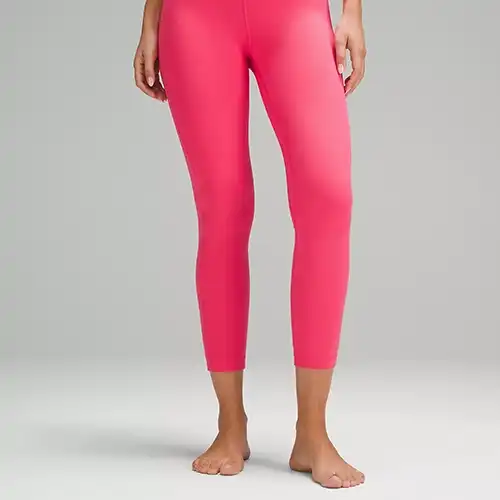How the pressure for your ‘fit to fit in is affecting the mental health of younger generations.
Is it just us, or do tons of young adults seem to wear the same bags, shoes, and dress styles these days? (Crop tops and 90s-esque Doc Martens boots are everywhere.) It feels like trends are more powerful than ever and individuality is dying. As if there’s a hidden power at play, waving around a magic wand and anointing certain styles as approved. That is until just three weeks later, when they’re officially over.
That sudden exiling of certain fashion trends is making its way up to older generations, too. Remember when a push notification was sent out to millions of people declaring skinny jeans and side parts were “canceled” by Gen Z? Many of us made light of that and kept rocking our skinny jeans while trying out a middle part. But there’s a darker side to all of this fashion pressure — especially on younger generations.
While fashion trends are nothing new (every year, there’s a fresh set of rules to play by) today, there’s extra pressure on Gen Z to wear certain items, stemming from what they observe on social media. And it’s having a negative impact — not only is it promoting fashion conformity, but it’s also impacting their mental health. Research shows that the rise of social media use as a result of the pandemic is causing a staggering uptick in mental illness amongst this group (anyone born between 1997 and 2012). Who or what is to blame? And how much does style play into the pressures weighing Gen Z down?
Increased social media use during the pandemic had negative effects on Gen Z’s mental health
Gen Z’s use of social media only increased during the pandemic — they now average at least four hours a day on a smartphone. And research shows that uptick had a negative impact on their overall wellbeing. Since Covid-19 broke out, mental illness diagnoses in kids aged five to 16 years old increased by nearly 50 percent — from one in nine children in 2017 to one in six, in just four years. The rise of social media use, coupled with less physical activity, were the key drivers for the shocking acceleration, according to a recent report by the Education Policy Institute.
Gen Z uses social media for shopping inspiration — and purchasing
When you consider that over 97 percent (whew!) of this young population claims they use social media as their primary inspiration for shopping — often buying items without ever leaving the app — it’s no wonder why we’re seeing so many TikTok-inspired outfits cloned on the street. But is this healthy?
The short answer is…no. The pressure to conform to wearing what’s been deemed “cool” by social media takes a negative toll. In findings from Pew Research, experts indicated that “pressures to conform have become dominant in social networks, causing some individuals to experience the loss of self-confidence and self-esteem.” Trying to fit in by wearing what’s trending socially can diminish morale. So it follows that empowering younger generations to cultivate their own sense of style could set them free of those expectations.
Going against the fashion grain
Research proves that the clothes you wear have a psychological effect on your mood — when you dress in clothing that brings you joy, it provides an emotional boost and even improves your mental skills. (A 2012 Northwestern study found that subjects wearing a lab coat had improved results in a series of tests, a phenomenon known as “enclothed cognition.”)
On the other hand, wearing clothes you don’t feel comfortable in just because they’re cool or “sexy” can negatively impact your day. (In a 1997 study, participants wearing a bikini felt more body shame and even performed worse on a math test.) So that’s reason enough to model for your kids how much fun it can be to buck trends — and to encourage them to wear whatever makes them feel good, even if it’s deeply off-trend. (Plus, when they’re in a good mood, that positivity is infectious, which is never a bad thing for your household.)
If Gen Z is indeed the generation that seeks out authenticity, it makes sense that they’d eventually move away from so much outfit mimicry. Assuming that stance has a ripple effect, they just might inspire their friends to feel empowered to wear whatever ‘fits they feel confident in, too. Even if those choices won’t be appearing on an Instagram page anytime soon.












